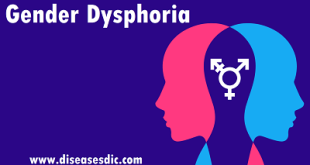Definition
Glaucoma is the eye disorder the affects the optic nerve of the eye which receives impulses from the retina and transmits to the brain. It is mainly caused by the high pressure in your eyes. This condition is called ocular hypertension. If this condition is not treated, the first peripheral loss will occur and finally, it leads to complete blindness. Sometime glaucoma may occur due to normal pressure in the eye; this is caused by the poor blood supply to the optic nerve. It can be treated with early treatment.
Mostly glaucoma has no symptoms, but when the day goes on, you may notice symptoms when the disease in the advanced stage. So it is important to have regular eye check including pressure measurements in the eye.
History
- Greek recognized the group of disorder in 400 BC. Glaucosis ( bluish green hue of the eye)
- Arabian writing in 10th about elevated intraocular pressure (IOP)
- In the 19th century, glaucoma was recognized as a distinct group
Epidemiology
- The prevalence of glaucoma is for the people who have age 40 to 80 years is 3.54%.
- The prevalence of (Primary Open-Angle Glaucoma) POAG is highest in Africa (4.20%) and the prevalence of Primary Angle-Closure Glaucoma (PACG) is highest in Asia (1.09%)
- In 2013, the number of people (aged 40–80 years) with glaucoma worldwide was estimated to be 64.3 million, increasing to 76.0 million in 2020 and 111.8 million in 2040.
- In the Bayesian meta-regression model, men were more likely to have POAG than women (odds ratio [OR], 1.36; 95% CrI, 1.23–1.52), and after adjusting for age, gender, habitation type, response rate, and year of study, people of African ancestry were more likely to have POAG than people of European ancestry (OR, 2.80; 95% CrI, 1.83–4.06), and people living in urban areas were more likely to have POAG than those in rural areas (OR, 1.58; 95% CrI, 1.19–2.04).
Types
There are different types of glaucoma are there. But the most common types include:
Primary Open-Angle Glaucoma (POAG): This type reduces your peripheral vision without any associated symptoms. It is painless and often patient doesn’t feel he or she loses the vision until the last stage of the disease. Once the vision is impaired, it can’t be reversed. Sometimes it may be due to the structural defect in the drainage system of the eye. It may be hereditary, so there is no cure for this disease. But some treatment may slow or arrest the severity of the disease.
Normal Tension Glaucoma: It is also called as low tension glaucoma. Sometimes with the normal intraocular pressure, optic nerve may get damaged and vision loss may occur. It is due to the poor blood supply to the nerves and thus it causes cell death that carries impulses from the retina to the brain.
Optic nerve with normal tension
Angle-Closure Glaucoma: This type of glaucoma is mostly occurring in Asian decent people or people who have far-sighted. It is also called an acute angle glaucoma. It has some sudden symptoms such as a headache, eye pain, dilated pupils, red eyes, vision loss, halos around lights, nausea and vomiting. In most people, this angle is about 45 degrees. As the age goes old, frequently lens grows larger. The ability of aqueous humor to pass between the iris and lens on its way to the anterior chamber becomes decreased, thus it causes pressure build-up behind the iris and leads to narrowing the angle. If the pressure becomes sufficiently high, the iris is forced against the trabecular mesh-work, blocking drainage, similar to putting a stopper over the drain of a sink. When this space becomes completely blocked, an angle closure glaucoma attack (acute glaucoma) results.
Pigmentary glaucoma: It is the rare type of inherited glaucoma that occurs mostly in men than women. It is due to the clogging of the drainage angle and causes the pigment layer to rub on the eye lens. This rubbing causes the iris pigment to shed on the aqueous humor and onto neighboring structures, such as the trabecular meshwork. The pigment may plug the pores of the trabecular mesh, causing it to clog, and thereby increasing the IOP.
Risk factors
Some of the conditions that lead to greater risk such as follows:
- People above the age of 45
- Family hereditary of glaucoma
- People who with intraocular pressure (IOP)
- Medical conditions such as myopia, diabetes, hyperopia, previous eye injury and long-term use of the corticosteroids
- People of African- American descent have high chances for developing glaucoma than other people
Causes
- The main cause of the glaucoma is a pressure that created in the eye that damages the optic nerve. The normal pressure, which is maintained in our eye ranges between 8 millimeters (mm) and 22 mm of mercury. The eye will be soft when the pressure is low and be harder when the pressure is high.
- The optic nerve is the sensitive part of the eye to high pressures because the nerves easily get damaged by direct pressure or decreased blood flow to the nerve.
- Some gene related to high pressure and optic nerve damage can cause glaucoma
- Some condition that causes glaucoma, such as inflammation of nerves, tumor, diabetes and an advanced cataract
Clinical manifestation of Glaucoma
Glaucoma doesn’t have symptoms at the initial stage. Symptoms are manifested after the disease has been reached to chronic form. The following symptoms may appear. If you noticed the following symptoms, please get a help from a doctor immediately.
- Severe eye pain is the first sign of Glaucoma
- Redness in the eye.
- Blurred or cloudy eye, particularly in infants.
- Tunnel vision.
- A headache
- Sick stomach (nausea).
- Rainbow colored halos around any light.
- The blind spot first develops in the side vision (peripheral vision) and outer side of the field of vision.
- In later stages, central vision is affected while seeing is fully lost
- Eye inflammation and infection.
Effects of glaucoma
- One of the major complications of Glaucoma is vision loss.
- Inability to drive because of blurred vision.
- Bleeding and infection of the eye after surgery.
- Most complications are arising after the treatment of Glaucoma.
Diagnosis and Testing of Glaucoma
To diagnose glaucoma, first, your doctor will test for the following
- Intraocular pressure (IOP): IOP is measured using tonometry. During this examination, your eye is numbed using eye drops to rest a lightweight probe gently on the surface of the eyeball. It touches the eyeball and measures the pressure. Sometimes a blast of air is applied to the eye’s surface. The normal IOP should be below 21 mmHg. If your IOP is greater than the 30 mmHg then you are at peak risk of losing vision.
- Assessment of the optic nerve: An optometrist will use eye drops to dilate the pupils and through a slit lamp assess the condition of the optic nerve. A bright light is passed into the eye to visualize the damage in the optic nerve. Eye drops that used to make pupil enlargement may develop difficult to drive and read from a long distance. It is important to have one of your family members along with you to get into the home.
- Visual field test or perimetry: Visual field test finds the missing part of the vision loss. A series of light spots are displayed and asked to look at the spots and will determine the field of vision you have. In which some dots may appear on the sides of eyeballs call peripheral vision.
- Corneal pachymetry: The high corneal thickness may interrupt the values of intraocular pressure and so it is measured using an instrument called pachymetry. It is a device having a pressure sensor probe at its tip is placed on the surface of the eye (Cornea). This procedure takes about 1 to 2 minutes.
- Gonioscopy: The angle where the cornea and iris meets are measured. During the examination, a hand-held contact lens is placed gently on the eye. This lens has a mirror which will show the angle between the iris and cornea is open or closed.
Treatment and Medication
Generally, glaucoma is an irreversible eye disorder. Treatment and medication may help to reduce and slows down the vision loss in the early stages. The main motive to treat the glaucoma is to reduce the IOP. Some of the treatment options based on the situation include:
Eye drops
At the very first your doctor prescribes eye drops to reduce the IOP in such a way to drain the extra fluid from the eye and regulates the fluid volumes through low secretion of fluids. Some of the eye drop medications are:
- Beta-blockers – It reduces the secretion of fluids in the eye, thereby reducing the pressure in the intraocular region. Examples: timolol and betaxolol. Unlikely some side effects are low BP, slow heart rate, difficult breath, impotence, and fatigue.
- Miotic or cholinergic agents: It increases the outflow of fluids from the eye. Ex: Pilocarpine. It may impose few side effects such as blurred vision, nearsightedness, and smaller pupils.
- Alpha-adrenergic agonist: It lowers the production of aqueous humor and increases the outflow of fluid. Ex. Apraclonidine and brimonidine which includes some side effects such as irregular heartbeat, redness or swollen eye, low BP, fatigue, and dry mouth.
- Carbonic anhydrase inhibitors: It also reduces the fluid buildup in the eye. Dorzolamide (Trusopt) and brinzolamide (Azopt) are some carbonic anhydrases which are having a metallic taste, frequent urination, and tingling in their side effects.
- Prostaglandin: It increases the fluid outflow from the aqueous humor and tends to reduce the pressure. Possible side effects may be redness and stinging of an eye, color change in pigments of the lashes and blurred vision. Ex. Latanoprost and bimatoprost. FDA approved prostaglandins are Xalatan, Lumigan, Travatan Z, and Rescula.
- Hyperosmotic agents: Usually these drugs are prescribed for people with severe high IOP and should be reduced before glaucoma become irreversible and permanent. It is usually given in emergency cases only. Hyperosmotic agents are oral glycerin and isosorbide orally, and mannitol and urea intravenously.
Surgery
When medicines are not curable and show side effects, surgery is necessary to save the vision. There are different surgical techniques employed for glaucoma.
Laser surgery: It is the most popular and easy way of glaucoma surgery. Laser surgery is an intermediate procedure between traditional drugs and present drugs. During this surgery, the patient’s eye is numbed using eye drops, and your doctor places a special lens to the eyes. Then a high beam of the laser is applied to the eye. There are different types of laser surgeries used according to the form of glaucoma.
Argon Laser Trabeculoplasty (ALT)
ALT is mostly used for the primary open-angle glaucoma (POAG). In this type laser beam is used to open the eye’s drainage channels while helping to drain the fluids properly. Sometimes medications are still needed along with this treatment.
Selective Laser Trabeculoplasty (SLT)
Very low-level lasers are used to treat specific cells, leaving the untreated portions of the intact trabecular meshwork. It is mostly used for the treatment of primary open-angle glaucoma (POAG). It is preferred as an alternative method of the unsuccessful eye drops and ALT treatment.
Laser Peripheral Iridotomy (LPI)
LPI is mostly employed for narrow-angle glaucoma. In this case, the angle between the cornea and the iris is too small and so it causes blockage in the fluid channel. LPI makes a small hole in the iris and makes it fall back from the draining channel to help fluid outlet.
Cycloablation: In this procedure, a part of the ciliary body is destructed to reduce the production of aqueous humor and hence the IOP is reduced.
Trabeculectomy: In this method, a passage is created on the sclera to drain the excess fluid. A flap is created on the sclera to drain out the fluids. This procedure doesn’t inflate the eyeball. A small bubble is formed which indicates the drainage of fluid from the eye.
Prevention of glaucoma
- Regular eye exams should be done
- Daily exercise such as walking, jogging, and running have chances to maintain the normal IOP.
- During yoga practice, you should avoid inverted positions like headstands and shoulder stands.
- Wear protective eyeglasses during your sports activities and home improvement projects.
- If you find any blurred vision immediately go for an eye check-up.
- In general, a check for glaucoma should be done:
Before age 40, every two to four years
From age 40 to age 54, every one to three years
From age 55 to 64, every one to two years
After age 65, every six to 12 months
- Avoid high amount of salts in your diet if affected with hypersensitive glaucoma.
- If you already have glaucoma, try to avoid coffee and caffeinated beverages to reduce high BP.
- Avoid drinking water at single sip. It is advised to drink a small amount of water during a course of a day.
- Consume very less red wine, green tea, and black chocolate.
- Have foods that are rich in omega 3-fatty acids.
 Diseases Treatments Dictionary This is complete solution to read all diseases treatments Which covers Prevention, Causes, Symptoms, Medical Terms, Drugs, Prescription, Natural Remedies with cures and Treatments. Most of the common diseases were listed in names, split with categories.
Diseases Treatments Dictionary This is complete solution to read all diseases treatments Which covers Prevention, Causes, Symptoms, Medical Terms, Drugs, Prescription, Natural Remedies with cures and Treatments. Most of the common diseases were listed in names, split with categories.








My Father has glaucoma which has resulted to blindness, I have taken him to several hospital here in Nigeria I don’t know if you can assist me because he is only thing I have in these world please kindly assist read to fly him abroad if necessary +2348095368837
Please go for an natural treatment. It would help your father. Search for your nearby natural based treatment.
MERRY CHRISTMAS IN ARREARS AND A BLESSED NEW YEAR 2018 TO THE ENTIRE TEAM. THANKS FOR THE INFORMATION ON GLAUCOMA I HAD ASKED FOR THIS SOME MONTHS BEHIND. IT IS CONFIRMED THAT I HAVE GLAUCOMA. I WILL HAVE TO FIND OUT THE TYPE FROM MY DR. DURING MY ONE MONTHS RENDEZ VOUS IN THE DAYS AHEAD. THE IOP AND TYPE OF GLASSES TO WEAR WERE DONE.
I ADMINISTER A DROP OF CARTEOLOL HYDROCHLORIDE ON EACH EYE EVERY 6AM.
PLS. CAN GLAUCOMA AFFECT JUST ONE EYE. CAN GLAUCOMA BE TREATED TRADITIONALLY. THANKS.
pls. one more question.
I ply on regular basis a very dusty road. What could be the effect of dust on glaucoma and what precautions could be taken. Thank
absolutely I understand for this Condition
and I will wish To use for this
prevention and Help The Other
who Doesn’t know for this
dangerous
sincerely Thanks For Receiving this
Good Lecture
presently I don’t see with my left eye can prescribe eye drops to assist me to restore sight
consult a doctor to get treated.
so like the doctor says I’m showing signs of glaucoma, that was tough u know and I rely want to know how to like get it out of the way u know what I mean..so could u please reply me.coz it’s very serious
Please consult ophthalmology specialist to avoid serious effects.
Please I could see very well in my 40s but recently discovered that water uses to drop from my eye but could read very well at nite. What drugs could I use to stop this
Please consult an ophthalmologist.
pls in the darkness I cannot see at all either in the afternoon or night pls what can I do or what treatment can I use
consult an ophthalmologist.
please help me I can not see clearly some tines s blocking my view
Consult an ophthalmologist.
What can I do to stop it
Please consult an ophthalmologist.
which type of tea and alcoholic drinks is suitable for people under this condition?
Drinking at least one cup of caffeinated tea a day may lower a person’s risk for glaucoma.
It has been confirmed by my doctor that I have glaucoma but whenever I consume alcohol and stay for about 2 to 4hours,I see clearly as if I don’t have any sight defect.Need advice please.
Please consult an ophthalmologist.
this is very interesting information. Prevention is better than cure
I would like to know why uto have less water in Glaucoma
According to the medical experts, drinking water can temporarily raise the intraocular pressure in some people. Yes, drinking suitable amount of water will help you against glaucoma because of the moisture of the eyes. At the same time, enough water inner body will make you keep healthy at the whole body.
Please I need a help because am suffering from glaucoma and am still 19 years old and I went under laser surgery in Sudan and the right eye with the disease still cannot see well So I need your help, Can glaucoma be cured.
please consult a doctor asap.